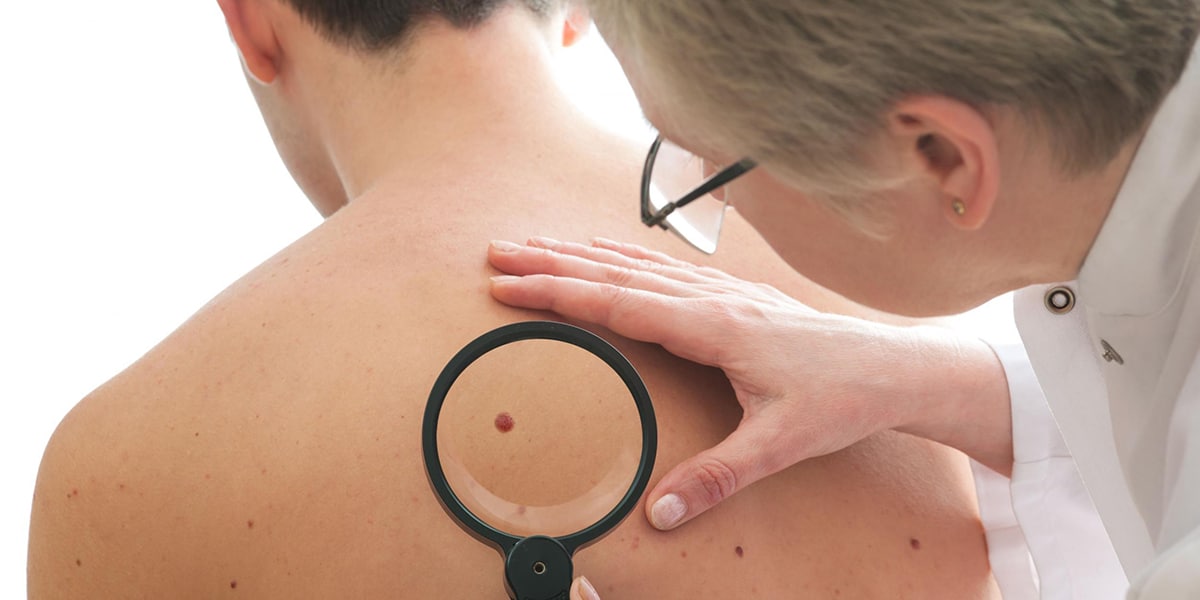We all know that spending a bit too much time under the sun can cause sunburns. But the damage doesn’t stop there; UV rays from the sun are also a leading cause of skin cancer. 1 in 5 Americans, 1 in 7 Canadians, and 2 in 3 Australians will develop skin cancer in their lifetime, mostly due to overexposure to UV radiation.¹ ² Of the different types of skin cancer, melanoma is the most deadly. Here’s everything you need to know about melanoma skin cancer, including what it is, the early warning signs, and how to prevent it.
What is Melanoma?
Melanoma is the most dangerous form of skin cancer. Almost 180,000 cases of melanoma will be diagnosed in the United States in 2018 alone.¹ The incidence of melanoma is also on the rise: in the past decade, the number of new melanoma cases diagnosed every year has increased by 53%.¹ Though melanoma only accounts for 1% of skin cancers, it causes the majority of skin cancer deaths. Every hour, one person dies of melanoma.¹
Melanoma skin cancer is cancer that originates in your melanocytes. They’re your skin cells that are responsible for making melanin, the pigment that gives your skin its color. The major cause of melanoma and other skin cancers is ultraviolet (UV) radiation, which inflicts DNA damage to your skin cells. In the case of skin cancer, your skin cells start to multiply quickly and grow uncontrollably, forming malignant tumors.
Melanoma is usually clearly visible on the skin. The majority of melanomas are black or brown, but can also take on other colors like purple, pink, or blue. The cancer is curable if it’s recognized and treated early. If not, it can spread to other parts of the body, where it becomes a lot harder to treat and can become fatal. Early Warning Signs
It’s important to be on the lookout for early warning signs of melanoma skin cancer. The first signs can appear in one or more atypical moles, so be sure to know your skin well and be able to recognize any changes. Be on the lookout for the 5 ABCDE’s: Asymmetry, Borders (uneven, scalloped, or notched edges), Colors (variety of shades), Diameter (greater than 6mm), and Evolution (change in size, shape, color, height). It’s recommended that you examine your skin from head to toe once a month. If you detect anything suspicious, make sure you see a physician immediately.
Preventing Melanoma Skin Cancer
Skin cancer, including melanoma, is one of the most preventable types of cancer. The key is to be diligent about protecting your skin from UV rays. Remember to always wear a broad-spectrum sunscreen with an SPF of at least 30. Don’t forget the often-neglected spots like the tip of your ears and the back of your neck. UV protective clothing and a wide-brimmed hat are also good forms of sun protection. To stay protected in the sun, you can also use the free sun safety app, Sun Index. Available for iOS and Android, the app gives tailored sun safety recommendations, such as how long you can stay in the sun before getting a sunburn and how much sunscreen to apply based on how much skin you have exposed.
Sources:
- Skin Cancer Foundation. (n.d.) Skin Cancer Facts & Statistics. Retrieved June 25th, 2018
- Cancer Council Australia (n.d.) Skin Cancer. Retrieved June 25th, 2018



